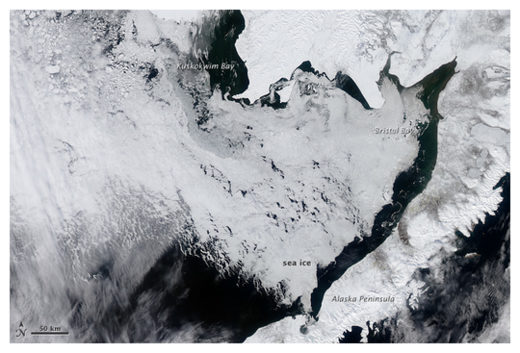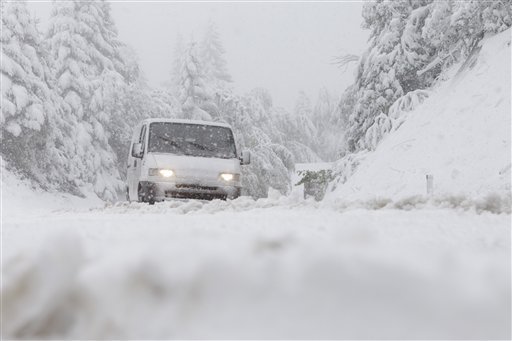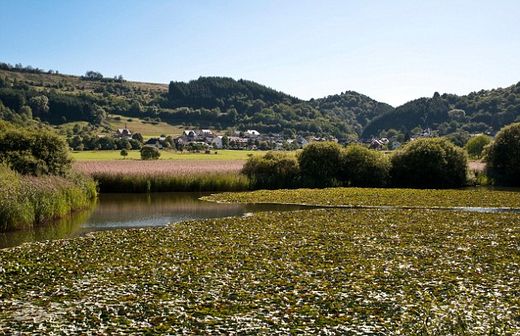
© NASAOn April 11, sea ice still covered the Bering Sea.
Arctic sea ice has persistently dwindled over the last three decades, yet sea ice set record highs in waters around Alaska this past winter.
Ice in the Bering Sea not only covered more area than usual, it also stuck around longer, bucking the
downward trend in sea ice cover observed since 1979, when satellite records for the region began.
The Arctic as a whole had below-average sea ice cover during the 2011 to 2012 winter season. At its maximum, reached in mid-March, sea ice covered 5.88 million square miles (15.24 million square kilometers), the ninth lowest in the satellite record.
Yet Alaskan waters were
choked with ice.
Sea ice cover in the Bering Sea was well above normal for much of the season, and reached a record-high extent in March 2012. In addition, ice surrounded the Pribilof Islands, tiny volcanic islands in the middle of the Bering Sea, for a record number of days this winter.


Comment: Interesting that the main stream media is slowly letting the news out. Quite a number of real scientists are in agreement that the earth has actually been cooling and that we are due for another ice age in the very near future (among other things!):
Ice Ages Start and End So Suddenly, "It's Like a Button Was Pressed," Say Scientists
Reflections on the Coming Ice Age
'Forget global warming, prepare for Ice Age'
Scientist predicts 'mini Ice Age'